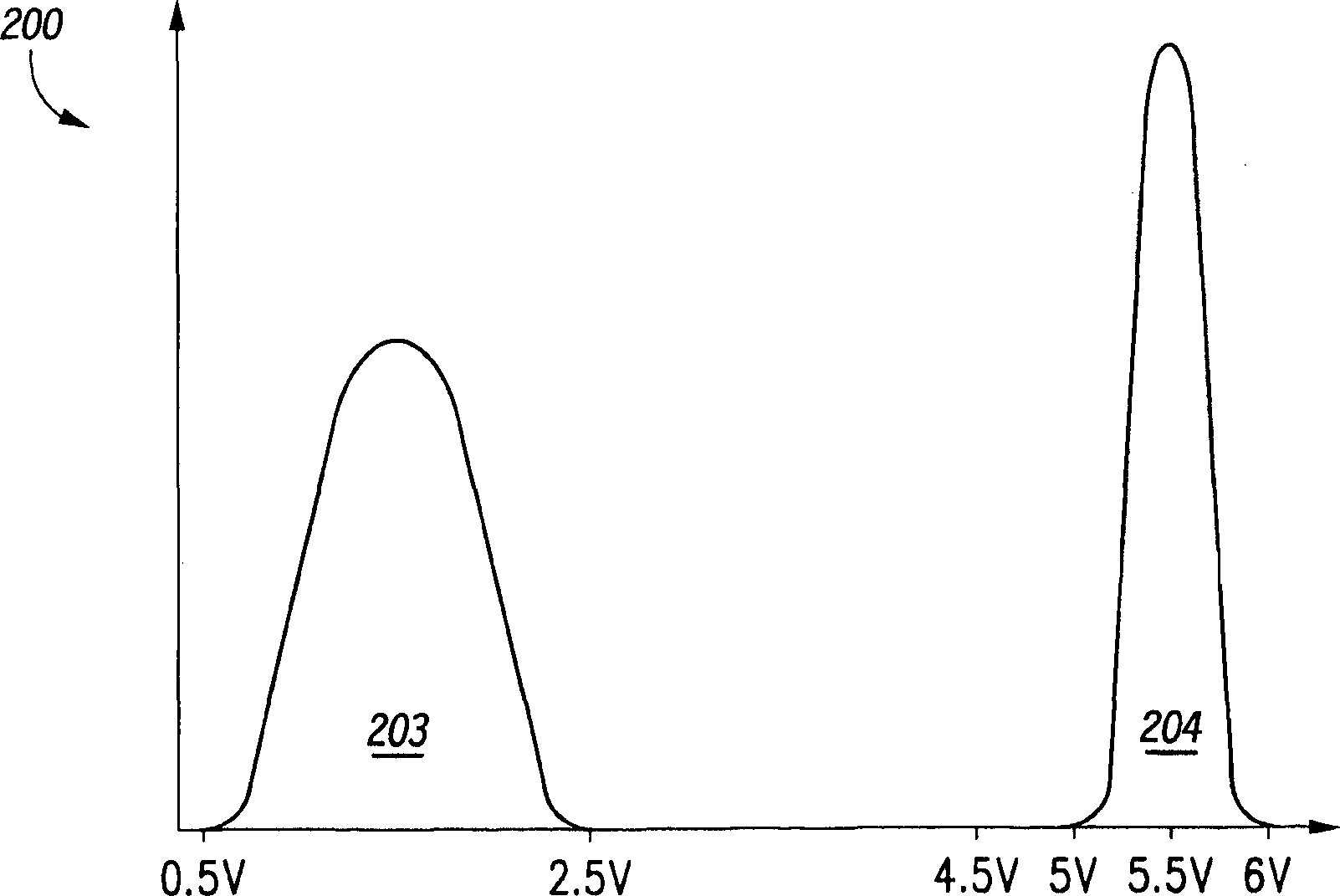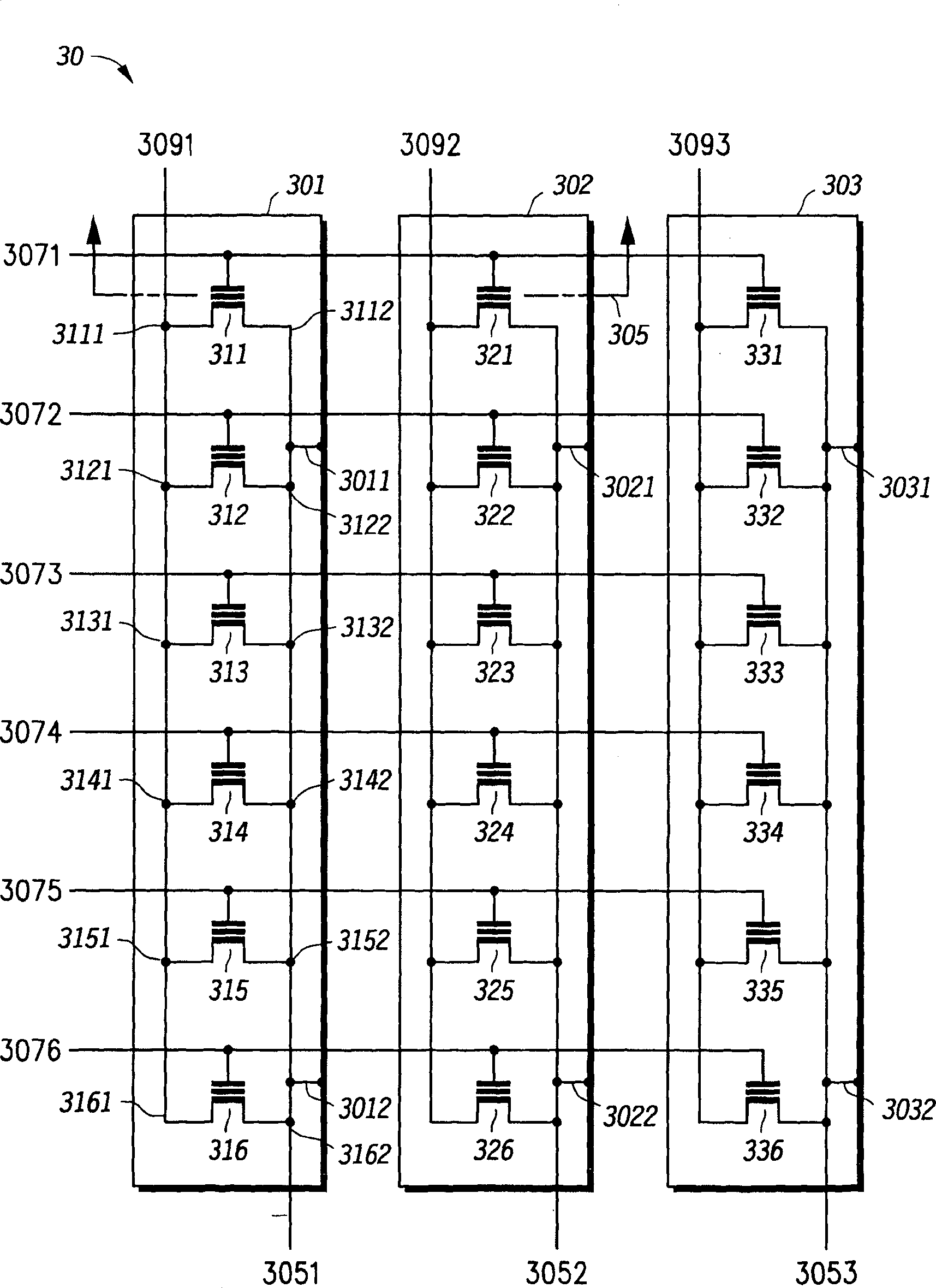Non-volatile memory, method of manufacture, and method of programming
A memory cell, read-only memory technology, used in static memory, read-only memory, semiconductor/solid-state device manufacturing, etc., can solve problems such as power consumption and cross-leakage of adjacent cells, and achieve the effect of fast access
- Summary
- Abstract
- Description
- Claims
- Application Information
AI Technical Summary
Benefits of technology
Problems solved by technology
Method used
Image
Examples
Embodiment Construction
[0024] According to one embodiment of the invention, a nonvolatile memory (NVM) array, such as an Electrically Erasable Programmable Read Only Memory (EEPROM) array, includes columns of memory cells formed in separate p-well regions to The programming threshold voltage distribution width of selected memory cells in the array is reduced. For example, multiple memory cells sharing a common bit line are formed within a well region such as a p-well region. In one embodiment, each isolated p-well forms a column of memory cells in the array. The p-wells are electrically isolated from each other using shallow trench isolation (STI) structures. Memory cells formed in individual p-well regions share a common bit line and a common source line. Isolating the memory array into individual p-wells improves programming control by allowing the memory cells of the array to be programmed into a tight threshold voltage distribution.
[0025] refer to image 3 , the memory cell array 30 includes
PUM
 Login to view more
Login to view more Abstract
Description
Claims
Application Information
 Login to view more
Login to view more - R&D Engineer
- R&D Manager
- IP Professional
- Industry Leading Data Capabilities
- Powerful AI technology
- Patent DNA Extraction
Browse by: Latest US Patents, China's latest patents, Technical Efficacy Thesaurus, Application Domain, Technology Topic.
© 2024 PatSnap. All rights reserved.Legal|Privacy policy|Modern Slavery Act Transparency Statement|Sitemap



